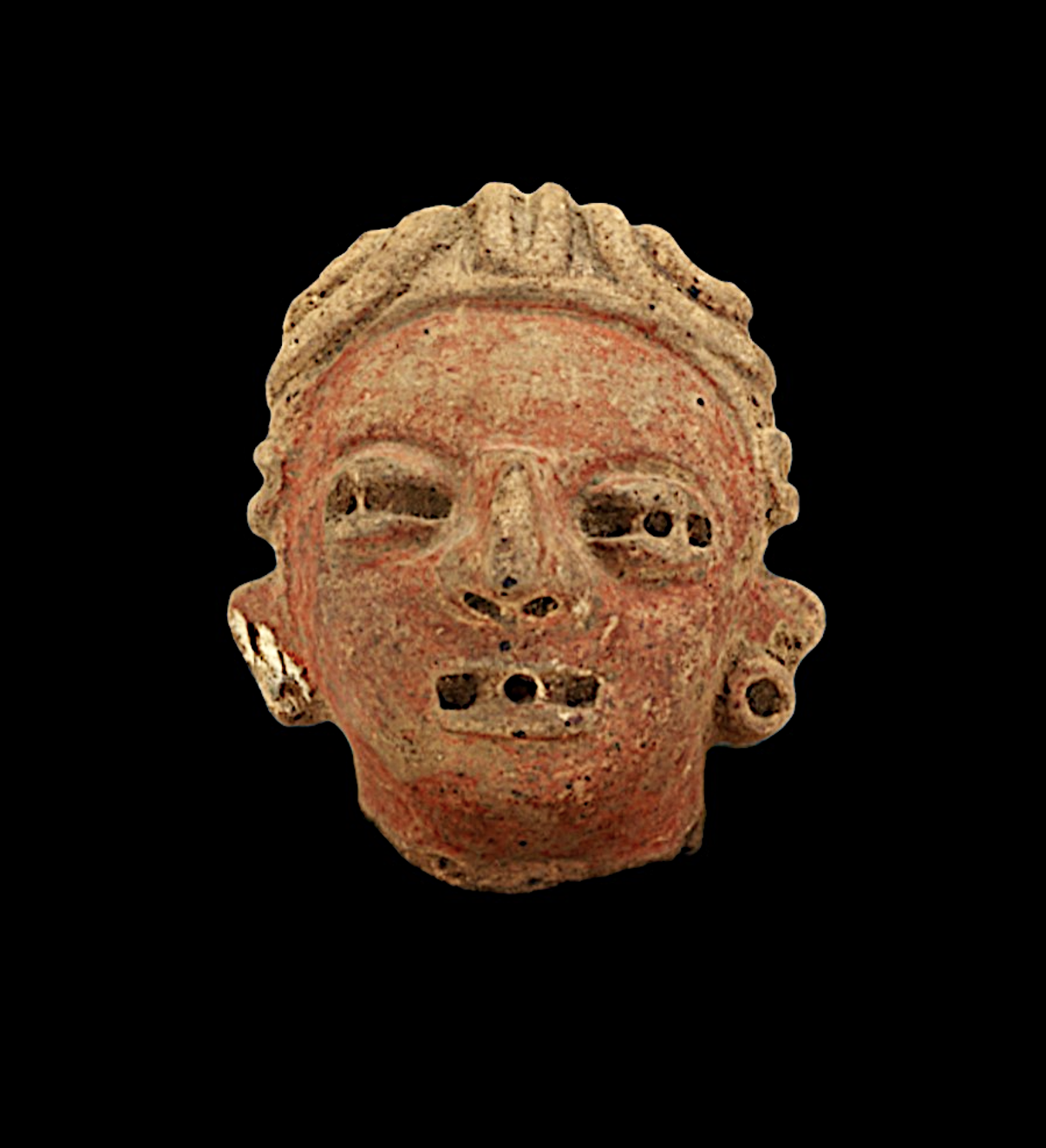

Title: Rare Ancient Terracotta Aztec Pottery Ceremonial Warrior Head
Shipping: $29.00
Artist: N/A
Period: Antiquity
History: Ancient Art
Origin: North America > Mexico
Condition: N/A
Item Date: N/A
Item ID: 1431
Spectacular Aztec-Style Ancient Ceramic Terracotta Pottery Ceremonial Head on Wood Plinth A striking Aztec-style ancient ceramic terracotta pottery ceremonial head fragment, hand-potted with aperture details and painted with natural pigments. Mounted on a custom wood plinth. Dimensions (ceramic head): 3 ⅞" H x 3 ½" W x 2 ⅞" D Plinth dimensions (approx.): 5 ½" L x 4 ⅜" W x ¾" H Medium: Hand-formed and hand-painted clay Provenance: From a private collection, formerly part of the estate of Dr. Seth Spaulding, Professor at the University of Pittsburgh. In ancient Aztec culture, terracotta human head sculptures were significant artistic and spiritual objects, often used in rituals, offerings, and as symbolic representations of deities, ancestors, or important figures. Crafted from earthen clay and hand-painted with natural pigments, these heads were sometimes created to honor the dead or to serve as votive objects placed in temples or ceremonial sites. The Aztecs believed the human head embodied power, identity, and the soul, making it a potent symbol in their religious and social practices. These sculptures, often stylized and expressive, offer insight into the aesthetics, beliefs, and craftsmanship of one of Mesoamerica’s most complex civilizations. It is crucial to preserve and honor artifacts—especially small pieces of history like ancient pottery from civilizations such as the Aztecs of Mexico—because they serve as tangible connections to our shared past. These objects, though often modest in size or appearance, carry invaluable information about the daily lives, spiritual beliefs, craftsmanship, and cultural identity of one of the most advanced and influential civilizations in the Americas. Each shard of pottery or fragment of an artifact holds silent stories, reflecting agricultural practices, religious ceremonies, trade networks, and artistic expression. When preserved and studied, even the smallest item becomes a key that helps unlock the mysteries of human history, grounding us in where we come from and guiding how we understand ourselves and our future.
The Aztec people, originally a nomadic tribe from northern Mexico, settled in the Valley of Mexico around the 13th century and went on to build one of the most powerful and sophisticated empires in Mesoamerica. Their civilization thrived on a deep integration of religion, art, and daily life, with terracotta playing a vital role in their material culture. Terracotta fragments—such as ceremonial figures, masks, and vessels—are invaluable today because they are among the few surviving remnants of this once-great empire. These fragments not only reflect the Aztecs' remarkable artistic skill and symbolic language but also serve as tangible links to their spiritual beliefs, societal structure, and rituals. Each piece, even when broken, holds archaeological and cultural significance, offering insight into an ancient world lost to time but preserved in clay.